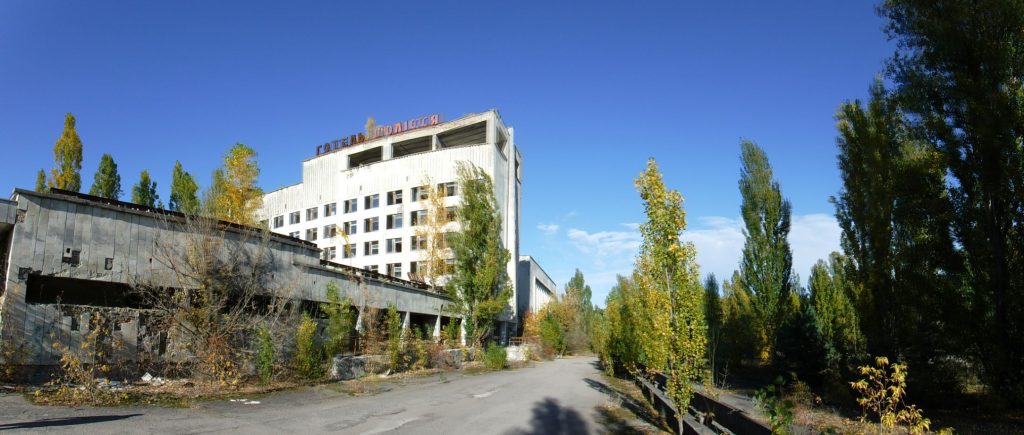
‘Dark Tourism’ has become more than a catchphrase; it’s now a bona fide part of the broader tourism industry. There is no shortage of people who want to see first-hand the places where significant historic tragedies, crimes and disasters occurred. I am one of them.
A Dark Tourism destination may attract a general history buff, or perhaps an individual who believes a particular tragedy, its victims and its lessons should not be forgotten. Thrill seekers, drawn by macabre fascination, may also journey to Dark Tourism locations. Researchers believe that when visiting such sites, tourists often reflect on the question ‘what would I have done in that situation?’1 With respect to locations where crimes were perpetrated: ‘These are important sites that tell us a lot about what it is to be human. I think they’re important places for us to reflect on and try to better understand the evil that we’re capable of.’2
When Ukrainians asked me which places I was going to visit in their country, I would reel off a list that included Chernobyl. The response was nearly always the same: ‘Chernobyl no good’ and ‘why do you want to go there?’ I have to admit that when asked this I would stumble a little in response. I had always thought Chernobyl would be fascinating, but now I was wondering why. Why did I want to go to the site of the world’s worst nuclear disaster? Although I couldn’t clearly articulate my reasons, I wanted to see Chernobyl for myself.
The Vladimir Ilyich Lenin Nuclear Power Plant (commonly referred to as ‘Chernobyl Power Plant’) is located 16 kilometres north of the town of Chernobyl, which lies 130km north by road from Ukraine’s capital, Kiev. In the early morning of April 26th, 1986, technicians began a test on the Plant’s reactor number four. They were trialing a new procedure to keep the reactor cool during the 40 seconds that would elapse between a power failure and when auxiliary power would become available. In his book ‘The Dead Hand’, David Hoffman describes what happened during the test:
‘The duty officers were ill-prepared, and the reactor designed flawed…the reactor was powered down to very low levels for the test. Then apparently because the power was too low, the operators tried to power it up again, perhaps too quickly. Nuclear fission creates by-products that must be allowed to dissipate before the reactor is powered up again, but this danger was ignored. As they powered up the reactor, a chain reaction started to spin out of control.’3
A series of explosions followed, killing two technicians and spewing radioactive elements into the air. It would be ten days before the fire at the reactor – which continued to pump radioactive elements into the environment – would be brought under some semblance of control. A further 29 plant workers and emergency services personnel died shortly after the accident from acute radiation exposure. Ongoing research is attempting to quantify the effect of radiation on those who lived and worked near the Plant, and those exposed to radioactive elements that travelled more broadly across Ukraine, Belarus, Russia and beyond.4
After booking my tour to Chernobyl a few days prior, I walked the 20 minutes from my apartment in Kiev to the pick-up point in the crisp early morning. I registered with the chirpy tour guide and boarded the 44-seater coach, having imagined I would be travelling in a minibus. To my surprise the bus filled rapidly as more tourists arrived, until by departure time every seat was taken. I wondered if the Covid-19 impact on tourism was finally waning as our loaded bus pulled away from the kerb. During the two hour ride, our guide provided some information about the day ahead, and played a documentary video of what happened at the Power Plant back in 1986.
As we neared the exclusion zone, a 30km circle surrounding the accident site, our guide explained that by government decree, tourism was not actually permitted inside. Therefore we were not on a ‘tour’ but rather an ‘educational visit’. Next was a list of safety directives to follow during our time within the zone: do not touch anything on the ground, do not sit on the ground, be careful not to drop anything, do not remove anything from the zone, eat only on the bus, smoke only in a permitted area, do not enter abandoned buildings or structures. Also, for those of us that had hired a Geiger counter for the day, not to set it down on any surface. This was on top of instructions given to us when we booked the tour to wear long pants, a long-sleeve shirt and closed footwear.
We pulled up at the Dytyatky Checkpoint, which looked like a small-scale international border crossing. We were asked to get off the bus and hand over our passports, which the guide took to the army staff. There were a couple of cafe/souvenir caravans set up and several other buses parked up.
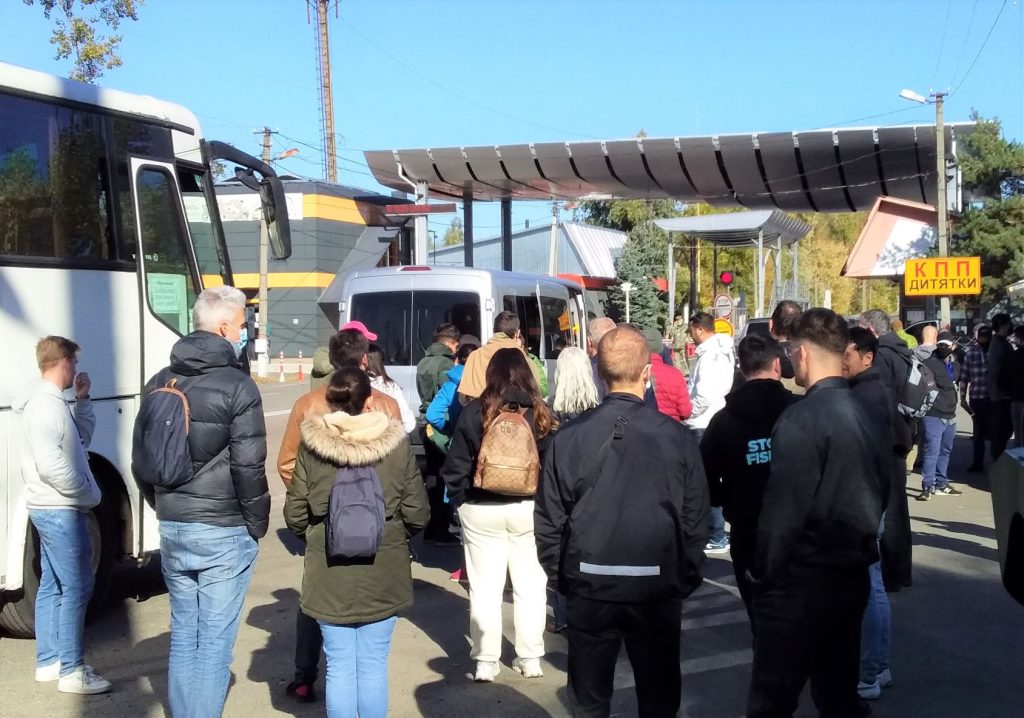
Our guide returned from the checkpoint office and called us up one by one. Our passports were returned, we were given a ticket, and also a dosimeter (a matchbox-sized aluminium box on a lanyard) to record the radiation we would be exposed to through the day.

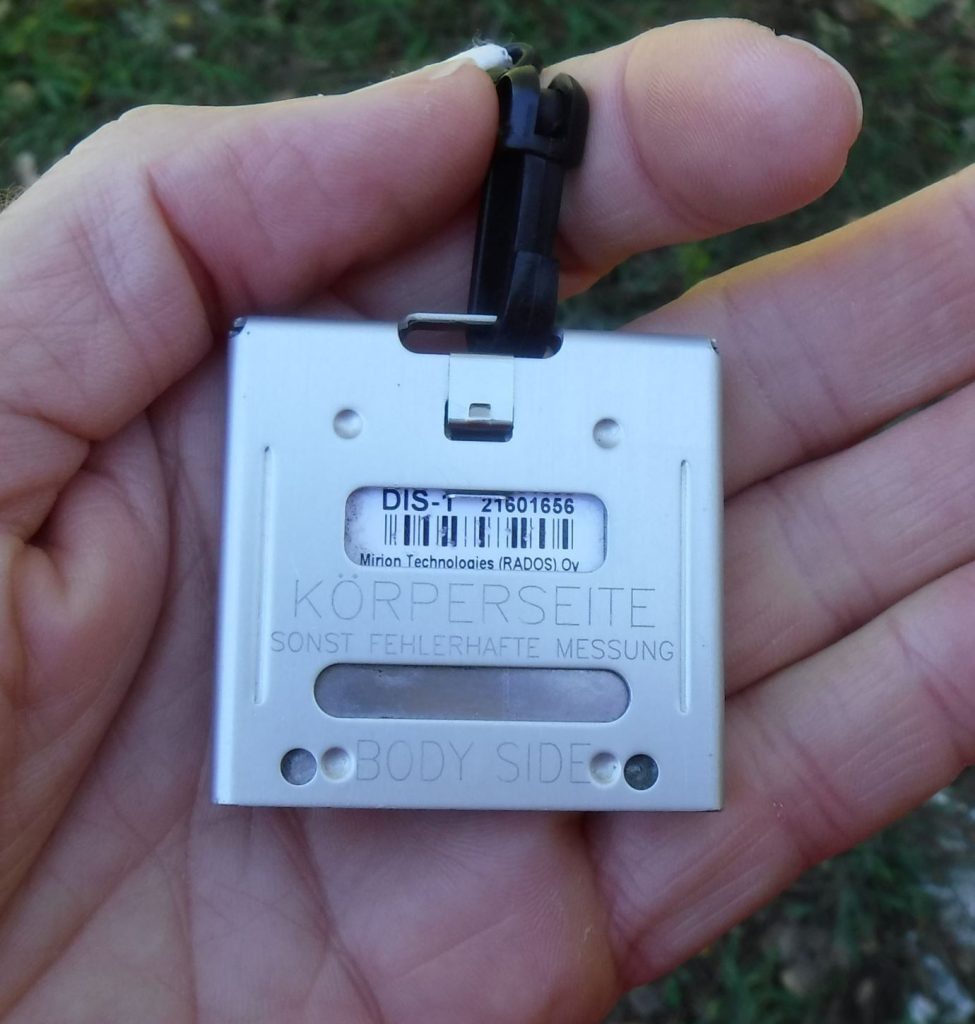
Radiation dosimeter
I was also issued a Geiger counter that I had rented for the ‘tour’. After we all had the necessary documents and gear we lined up beside the bus, and a huge soldier checked our passports and tickets before we were allowed to re-board.
We drove through the checkpoint and on to our first stop for the day, the abandoned village of Zalyssia. We walked down a narrow, overgrown track perpendicular to the road, which presumably had been wide enough for vehicle access in the past. On either side were rural-style houses and sheds, left when the village was evacuated after the accident. All was still and quiet.
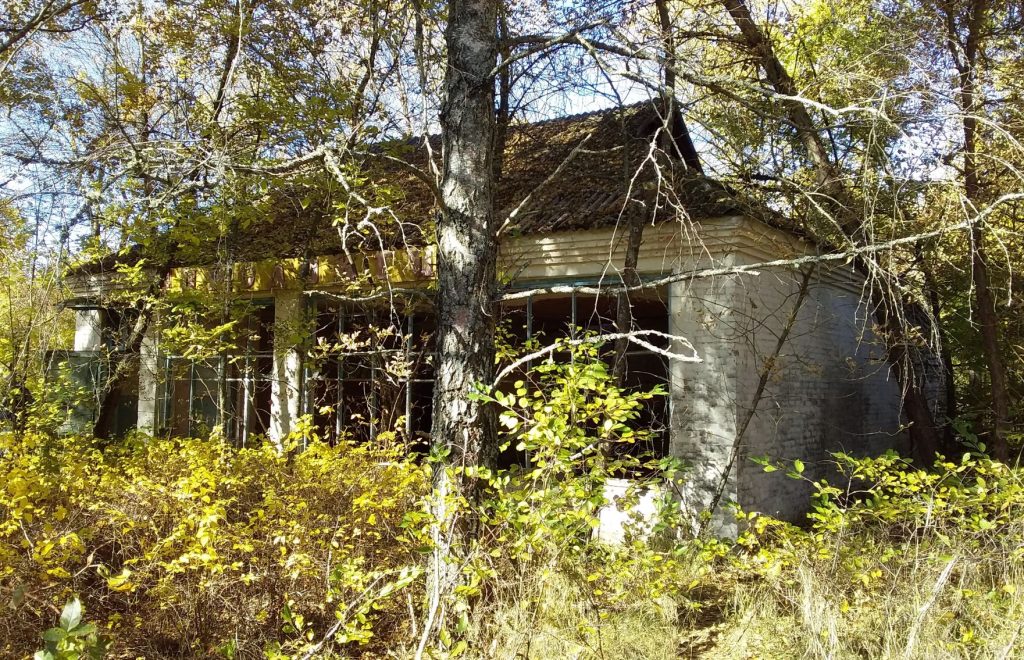
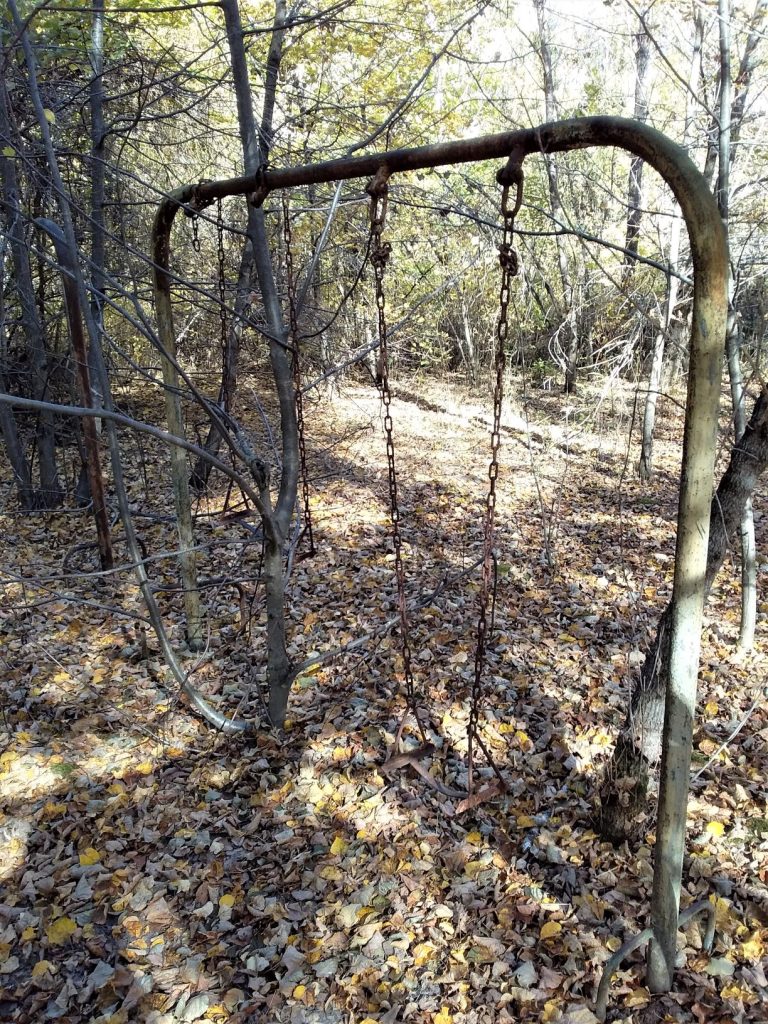
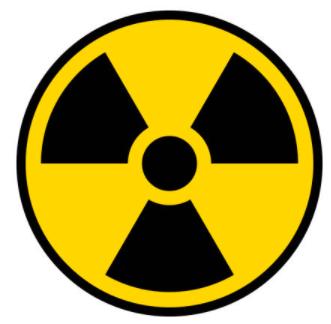
The average background radiation level in Australia is 0.17 microsieverts (µSv) per hour5. This will give you a comparison with the readings I took in Chernobyl.
Zelyssia: 0.2 µSv/hr
Heading further towards the Power Plant we arrived at Lviv Checkpoint on the border of the 10km exclusion zone. We were warned that the police and army stationed there were strict and non-nonsense, and we filed off the bus to once again have our passports and tickets checked.
After clearing the checkpoint and entering the ‘hot zone’, we took a side road to visit the DUGA-1 over-the-horizon radar installation. Our guide explained that the reinforced concrete roadway lead, according to defence officials, to an abandoned ‘children’s holiday camp’. (Although marking the site as a holiday camp on maps may have provided some degree of secrecy regionally, I imagine the Americans knew what is was because it is so bloody big they could likely see it from space). After a ten minute walk we arrived at the radar which was absolutely massive, standing 150 metres high and nearly 700 metres long.
Built to detect incoming Intercontinental Ballistic Missiles, a vast array of horizontal wires reflected signals to receivers shaped liked tube-steel cages. This gigantic radar apparently had some technical problems, was outdated by the time it was built, and then after the accident had to be abandoned anyway.

DUGA-1 radar station: 0.26 µSv/hr
Next stop was the kindergarten at Kopachi village, and before we got off the bus, our guide told us to be particularly careful at the site. She explained that radiation levels were higher, and particular care should be taken not to touch the ground, or anything else for that matter. The forest was encroaching on the narrow path that lead to the kindergarten, and we proceeded in single file. The rooms contained abandoned desks and beds, with children’s books, drawings and toys lying around. The place definitely had a post-apocalyptic feel.
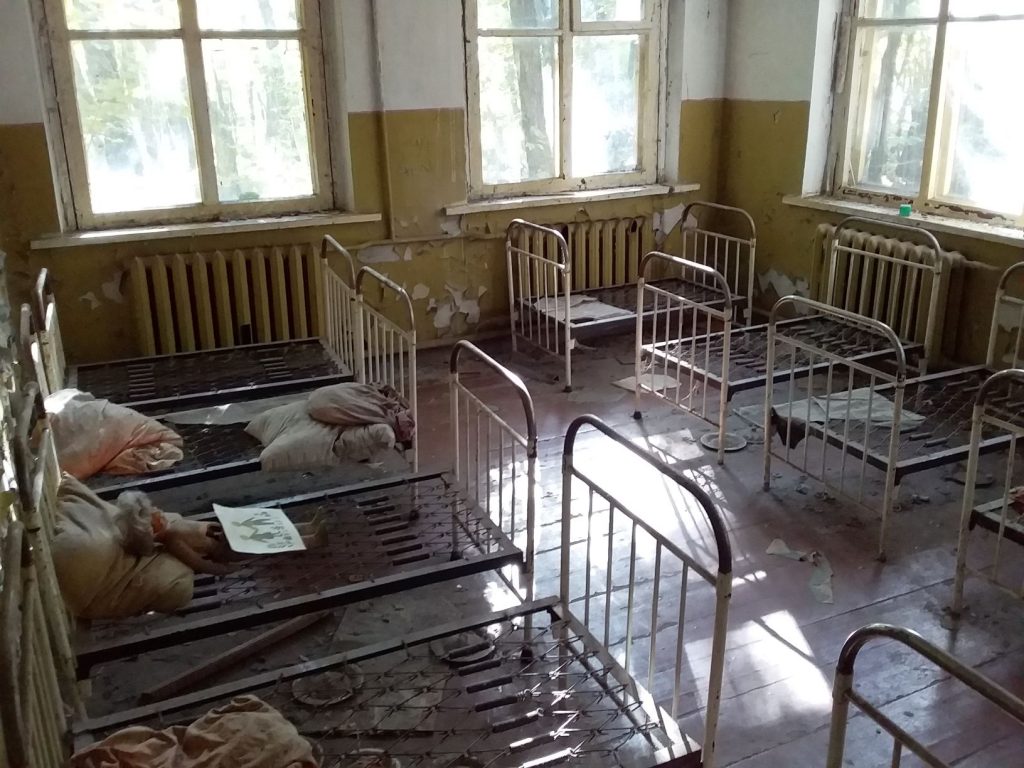
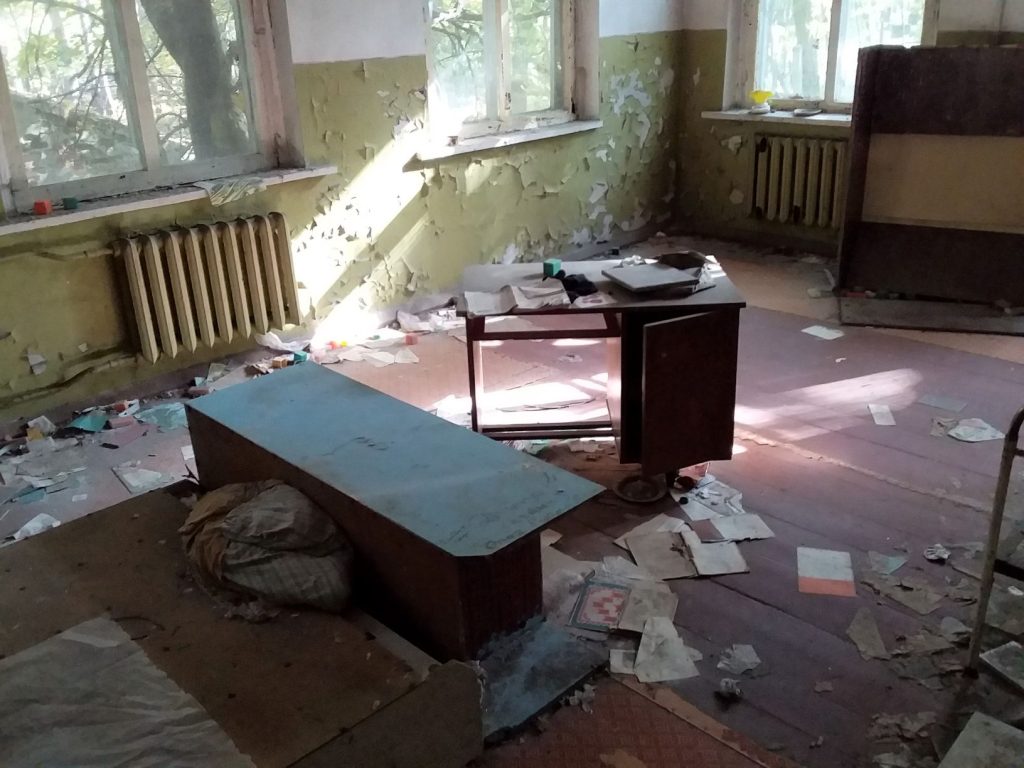
After returning from the kindergarten we were told to stomp our feet on the sealed road, in an effort to remove the dust and soil from our shoes. I had considered this issue prior to the instruction – we were told not to touch the ground, yet we were presumably trampling dirt and dust particles into the bus every time we got back on board. I was surprised there wasn’t a little washing tray to stand in, or some sort of brushing system through which to slide your footwear prior to boarding.

Inside Kopachi Kindergarten: 0.46 µSv/hr
After a short drive we arrived within sight of the Chernobyl Power Plant itself, and the massive steel shell built over reactor four to trap the remaining radioactive material. For the first time we could see the actual place where everything had gone so horribly wrong at 1.23am on April 26, 1986.
To be continued…
1Sampson, H. 2019 ‘Dark tourism explained – why people flock to site of tragedy‘, The Washington Post
2Lennon, J.J. 2019, quoted in ‘Dark tourism explained – why people flock to site of tragedy’, Sampson, H. 2019, The Washington Post
3Hoffman, D. E. 2009 ‘The Dead Hand: The Untold Story of the Cold War Arms Race and Its Dangerous Legacy‘ Doubleday, New York, 2009 (The quotes are from chapter 12, but as I listened to the audio version of the book, I am unsure upon which page they appear)
4Gray, R. 2019 ‘The true toll of the Chernobyl disaster’, BBC
5Australian Radiation Protection and Nuclear Safety Agency, ‘Ionising Radiation and Health‘, Commonwealth of Australia
For more on the Chernobyl nuclear accident click here
If you liked this post, you may also like Visiting Chernobyl Part II, Museum of Strategic Missile Forces
Leave a Reply